Video Menu
My Favorite Videos
My Favorite Videos
Left vs. Right in the Golf Swing
Sorry, you need to be a member to access this video.
You Are Just Seconds Away - Become a member here!
Already a member? Log in now

Did you know there are TWO different ways the tour pros swing the club? And that choosing the way that is best for you can instantly improve not only how your swing feels, but your consistency as well? Discover the swing that is best for you in this video!
I play in a lot of Pro-Ams and people ask me, what do you think at the change of direction?
You know, from your backswing, top of your backswing, to the start of your downswing.
And I always try and feel that I'm, you know, I've made my full turn, get my shuttle behind the ball, and from here it feels like my left arm and the shaft is just dropping.
It's just falling down to the floor.
I try to play it a little softer shot, I tend to put the ball up in my stance a little bit.
I do like to feel like my hands are undercutting it a little bit, especially my right hand.
I connect the whole shuttle with my right hand, so.
It feels like my left arm and the shaft is just dropping.
I connect the whole shuttle with my right hand, so.
My left, my left, my right, my left, my left, my right.
Wait, what?
As if golf wasn't confusing and hard enough?
Now you have two different major champions telling you two completely opposite things about the golf swing?
What are you supposed to do?
How do you figure this stuff out?
It's exactly what we're going to talk about in this video.
Over the past 30 years, I have spent an absurd amount of time studying the golf swing mechanics of the greatest players of all time, my own swing mechanics, tens of thousands of my students.
And I've come to one conclusion over that time, over the past year of really deep diving into research.
I started with the high hands versus low hands and turned into left versus right, body versus arms, and so on and so forth.
And what I really am after is how do I get you, the average Joe, to hit it like the average pro?
That's really what it's all about.
Hitting the ball is fun.
Hitting the ball well is fun, I should say.
Hitting the ball crappy isn't fun at all to me.
So, I've always been obsessed with this idea of getting somebody to swing the club as efficiently as possible, as quickly as possible, while being safe on the body.
And so, I spent the past year during this whole coronavirus chaos and lockdown, deep diving into the swing, and came to a conclusion that there are basically two different ways to power the swing.
And they both provide essentially the same results, and even to many degrees, even produce the same mechanics, positions, and so on.
But they're achieved in two very different ways.
And what's exciting about this for you is that you don't have to put yourself in a box to say, I have to swing this one way, or I have to swing that one way.
The tour is proof positive that there are a million different ways to successfully hit the ball.
Now, of course, there are trade-offs, both in terms of inconsistency.
There's a reason there's a saying on the tour that 80% of your money is made, and 20% of the time, the rest of the time you're just struggling.
And then you get hot, and you make all your money for the season, and then you just kind of struggle.
That's true on the tour.
Tiger really set the bar to an unimaginable and unachievable standard to think that you could win, and be in competition to win every single week, day in and day out.
That was unheard of before him.
Most golfers struggle with consistency, even at the highest levels.
And then at the same point, there's injury.
There was an 81% injury rate on the PGA Tour.
Four out of five guys are going to get injured because of their golf swing.
So for me, and having spinal issues, as you guys know, I broke my neck, and so I have all kinds of issues going on with my body.
And so for me, being able to go out on a beautiful day like this, and enjoy this perfect grass and a bucket of brand new balls to hit, that's my happy place.
I want to be out here and be able to hit balls all day.
I enjoy this.
And so to be able to do it safely and easy on my body is huge.
And so I really wanted to take a deep dive over this past year and find what is the most efficient way to get you there, and a safe way to get you there that you can do it day in and day out, that you can consistently go out and hit the ball the way that you know you're capable of.
So here's the two basic patterns.
Essentially, you have a lead side dominant pattern and a trail side dominant pattern.
Again, both work, both produce essentially the same results exactly, even the same positions and so on for the most part.
But the way that they are achieved and the way that it feels is radically different.
And that's what we're going to talk about today.
So let's just talk about the basics of it.
The lead side dominant stuff that you've seen on rotary swing and trail side, because they're both on there, is what was typically called a double pendulum stroke.
And what that really means is that your lead arm being propelled by your body pivot, your body rotation, while the lead arm is very passive, pivots from your shoulder socket and then the club pivots from your wrist joint.
That's a double pendulum, right?
So as I'm swinging and rotating down, as I begin to post up, my left arm swings free from the chest.
Then the left wrist uncocks and the club releases.
And this is a very effortless, efficient way to swing the club.
The trick is that you need good body speed.
You need good body rotation, a good pivot in order to propel that arm.
You don't want to be trying to power the club with your left arm because you do that kind of stuff.
You want to put Sir Isaac Newton in the driver's seat and let your body pivot and the soft arms get released naturally due to the rotational, the centripetal force you're putting in your body by keeping your arms soft.
The arms and club will naturally release.
I'll post a video here real quick.
You can take a look at my swing.
I'll walk you through it real quick.
So let's take a look at my swing face on in a lead side dominated pattern.
And it'll be very easy to see for you to understand which is which because my right hand is barely even on the golf club.
As you can see here, and it'll be more clear as I start the club back.
I'll just play it for a second.
This is at 240 frames per second.
You can see my right hand.
My fingers are barely touching the club.
My right hand's barely on there at all, making a big turn.
But my right hand at the top still barely on the club.
Right hand really never involved in that golf swing.
So now as we go back, we can kind of walk through a couple of the key pieces that you'll see when you're working on a lead side dominated pattern.
This is a great way to practice.
If you're struggling with getting the ball to draw and getting the club released properly, this is a great way to learn that feeling is by putting the right hand barely on the club at all and then letting it come off before impact.
Because then the club will naturally want to freewheel and rotate around the heel.
The toe will naturally want to rotate.
And so it'll be very easy to hit a draw right away unless you're just yanking that left arm down.
And that's another good indicator when you're doing something wrong.
If you let that right hand come off in a lead side dominated pattern, the ball should draw right away.
But you'll see as we go back, notice what's moving first here.
You can see my lower body.
I'm shifting immediately into that right side because I'm getting my body loaded up because my arms aren't really going to do anything.
They're just going to chill out and come along for the ride.
So you can see as I take the club back, my wrists aren't setting.
Nothing's really happening other than getting my body to load into this right side and starting to make a big turn.
Left arm staying very straight.
You You can see again, my wrists still haven't set because there's no real activation in my wrists in a lead side dominated pattern because my right hand is not involved in the swing.
Because you can see it's barely touching the club.
You can see my finger there is still doing nothing.
And then my left wrist needs to be passive so that it can snap when I post up.
And you'll see that very clearly here.
So now you can see as I'm going back, everything's pretty relaxed.
But now you'll start to see as I begin to shift back into that lead side that the muscles really start to load up.
So during the first half of this swing, it almost feels pretty lackadaisical, right?
I'm not in a big hurry, but now is when the muscles in my trunk and my legs, my core start to really load up.
And so now you can see my legs, especially that lead leg is really loaded.
And then as I come down again, my right hand, my fingers are barely touching the club.
They're not even wrapped around it.
It's all just driven.
I'm just holding onto the club with my left hand and my body pivot is driving the swing.
And so now as I start down, as I get halfway down, you're going to watch my left leg really post up hard.
And that's going to do a couple of things.
It's going to allow me to leverage the ground to help release the club.
And it's also going to help me get my left shoulder to go up, which you can see here.
So let's just take a quick look at this from the top of the swing.
So we'll just do close to the top of the swing.
I'll just put a line on the center of my shoulder socket, give or take a little bit.
You'll note that it's going to go down first.
So in its low point, the center of my shoulder socket might be give or take about right there.
So it's dropped down.
I'm compressing.
I'm loading into my legs, but I'm also getting ready.
So this is where my shoulder socket is now, or let's just put a line here right here at the top of my shoulder.
And now as I get into impact, look where it goes right there at impact.
Look at the difference in my shoulder position.
It's gone up eight, nine inches, right?
So this movement is what we call parametric acceleration.
And what this is, is that left shoulder goes up and my hip, I'm driving that force literally straight down into the ground through my left leg.
As I do that, my left shoulder is allowed to powerfully go up and that passive left wrist snaps the club release.
And that's what causes that club to go down.
You always want to be moving in the opposite direction that you want the club to go when you're using physics to drive the swing.
So in centripetal force, as we're using rotation, we want to let that left shoulder work up at that last phase in the swing.
See, it happens very late too.
I'm not really starting to go up with that shoulder until that lead leg is working conjunctively with it to help do it with some force.
I don't want to try to just do this with my shoulders.
I need to use my legs.
They're much more powerful.
So now you'll see the left shoulder is much higher at impact and we get into a good impact position without really having to work for it.
Right.
My hands and arms are truly right arms, hardly doing anything.
Right leg is really not doing a whole heck of a lot.
I'm pushing a little bit off this big toe here to help drive some force and rotate my hips a little bit.
You can see my driving a little bit of force in there, but it's not crazy aggressive.
But the lead side is doing a lot of work.
And that's truly what you're going to focus on and feel in a lead side dominated pattern is that you're really using that lead leg.
That lead shoulder is going to work up as you start working on this idea of parametric acceleration, letting that club snap at the bottom.
You can see my arms are nice and wide there.
The right arm is still barely on the club.
It's not involved at all.
That's why you see this nice wide swing, wide release, because my wrists have not done anything.
And if you struggle with a chicken wing, you see this left arm breaking down really at this point in the swing.
You're very much overusing that right side in an incorrect way.
So which you can do, you just need to do it correctly.
So long story short, it's lead side driven is your hands and arms aren't really doing anything.
The right arm is barely even attached to the club.
In fact, I encourage you to practice hitting balls, letting it physically come off the club even before impact.
And you'll instantly start letting the club release and start hitting a nice simple draw.
So in that clip, you saw that my right hand literally wasn't even doing anything.
It was hardly even touching the club.
I certainly wasn't using it to provide power.
You saw an aggressive left side post up to get that pivot to really get the arm propelled at the end of the swing.
And that I'm using the ground to create force to help propel that arm.
That feels very passive with my arms and very lead side dominant with my body.
Now, the other way to propel the club is with right arm thrust.
This is a throwing motion.
And you've seen this on the website as well.
Because rotary swing is always allowed for both patterns because they both work.
And they're very common on the tour.
And the right side stuff is like a throwing motion.
That's why the throw the ball drill has been out there for so long.
And that motion is very simple.
It's very natural if you've thrown a ball.
I did that throw the ball drill 12, 15 years ago.
And I put it on the site and thought this is really the easiest way to get people to understand how to naturally transfer pressure from one side to the other and load up and get speed from their arms.
And then I realized a lot of people don't know how to throw.
I had a student who I used to do the throw the ball drill and we would put a ball on the ground.
And I would say, okay, all I want you to do is just naturally think about taking this ball and throwing it and hitting that ball on the ground just like that.
And what happened inevitably is not that.
I had, this is honest to God, true story.
This happened way more than you could imagine.
I'd say, okay, I want you to take this ball and throw it and hit that one and they would go.
And that was actually a good result from some of the ones we had happen.
I had a lot of people hit themselves in the foot.
And I realized that not everybody knows how to throw.
And so I've got a lot of students coming over from Europe.
They didn't grow up playing baseball and things like that.
Like we do in the United States.
They played cricket and other sports.
So a natural dynamic throwing motion wasn't natural to them at all.
And so I realized, well, not everybody's going to naturally pick up on this trail side throwing motion.
And some people do really well with a body driven pivot motion.
So they both work.
They both produce the same results.
And you can see both on the tour and you can see from one side of the spectrum, if you're lead side dominant or the other side of the spectrum, trail side dominant, you can see everything in between as well.
And that's where most golfers struggle and tend to make mistakes is because they don't know how to blend these two things together.
You can, but you have to understand there are certain components that work well with one side of the pendulum.
And there are certain components that work well with the other and certain don't work very well at all.
And it also starts to lead to specific types of injuries that I was experiencing this summer, as I started trying to experiment with what works well with other parts and what doesn't.
So instead of trying to go through the 50 million different variables that you could possibly have trying to blend these together, my idea was to separate them and say either sit on this side or sit on that side.
And then once you have the basic motions of either stroke pattern, then you can start to kind of finagle around with if you want to add a little more of this or that, et cetera.
But the important thing is to get the basic big picture stroke motion of what one side or the other is first.
And then, you know, you sit on one side of the other, and then you can kind of swing your pendulum back to whichever direction you wish once you have the basic motion.
So let's talk about how to quickly easily develop the basic motion of either one in the golf swing.
Let's start with the lead side first.
This is something you've seen a lot of tour players do.
Vijay Singh, John Daly is a great example.
He goes out to the range and you go to any tour event.
I highly encourage you to do it.
Just go sit on the range and watch how these guys warm up.
And you'll see John Daly just doing this hitting balls left handed only.
And that, and you'll see, he tends to make a little longer swing because, and that's normal for a lead side driven pattern, because you're not getting this burst of speed with the right hand.
You tend to make a little bit longer, more gradual golf swing.
It's a bigger swing.
It's a little bigger body turn because you're using that body turn to propel the arm and club.
On the other side of the spectrum, you have a more compact swing.
Tony Finau, John Rahm, Tiger Woods at 2020 at this point.
You know, a little bit more trail side dominant, and they have more shorter compact swings, which they can afford to do because they have, the right arm is capable of creating a lot of acceleration in a very short period of time.
Your lead side dominant, you're going to make a little bit longer swing.
Take your time.
It's a little bit more of a classical golf swing.
It's a little bit more graceful in my opinion.
It's a bigger swing and it feels more effortless.
So to feel that, just grab a club, make a little turn, like lead into the right side, just like you would normally.
Pivot and then let your arm fall and let the club release and feel your hand, your wrist and your shoulder being very relaxed.
Of course, the right hand's not on the club at all right now.
So you're just using your pivot to get the club.
And you can see, even though I'm putting no effort in this at all, just by letting physics propel that club, there's a lot of speed there and it's very effortless.
That's the first way to swing the club.
Now let's go to the other side and feel what it would feel like to do a right arm throw.
So now we don't need to make this big turn and, you know, give all this time to accelerate because we can make, we can use muscular force.
We can use a throwing motion in order to shorten the swing and the entire cycle of the swing and get more acceleration in a shorter period of time.
So now what you're thinking about is that throw the ball motion.
And the way that you're going to really get that speed is propelling that right arm with the right tricep, the muscle that extends your right arm.
And now you're thinking about a little bit more compact move and really throwing the club head at the ball.
Now you can see as I'm doing this, my swing compared to the left side dominant motion looks very different.
All right, here I have to wait to have to be patient.
I have to let speed build gradually and naturally and let my pivot propel it.
And then when I go right side, I don't have to do that at all.
I can make a short swing and you can see how much speed I'm getting in such a short stroke.
That's what I want you to experiment with today.
Go out to the range, take left arm versus right arm and see which one feels more natural to you.
If you have experience throwing a ball, this may feel very easy and natural to get this motion down.
When you're right side dominant, you're going to feel like your left arm isn't even involved in the swing.
You're going to be focusing on getting that right arm acceleration.
When you're lead side dominant, you're going to feel that your left side, your left arm is still relaxed, but the body pivot is going to be quicker.
You're going to be building speed and letting that club release naturally.
And you can hit balls doing that left arm or right arm only to get the basic feel of that.
So go out and start to experiment with one side or the other, and then put both hands back on the club and see if one feels more natural to you versus the other.
As a quick note here, it'll be much easier to hit the ball straight with the lead side because it's pulling, and it'll be common for you to have a little bit of a pull with the trail side because the right hand has a much easier time closing the face.
All right.
So now let's hit a couple shots with both patterns with the driver so we can see it in its full flailing glory of lead side and trail side.
And you'll see a difference in the tempo, the rhythm.
I'm going to exaggerate some things so it's a little bit easier to see kind of one versus the other.
But what I want you to notice is what you would imagine yourself feeling swinging one way versus the other.
So as you watch me hit these balls, I want you to put yourself in that position.
Feel what you see when you see me swinging.
So for instance, when I go to the lead side dominated motion, my visual, my feel as I kind of drag the club back as I load into this trail side and the clubs just in no hurry.
I'm definitely not picking the club up.
I'm just taking my time to get to the top because I have to make certain that my arms stay very soft and relaxed.
If I start tensing up, Then I'm going to throw this whole pattern off because I won't get that freewheeling speed that's driven from my pivot, from my body rotation to propel this lead arm.
If this arm gets tight and I start pulling it or pulling hard with this arm, which does not work, you're going to start leaving the face open.
You're not going to hit it solid.
So my visual when I'm going lead side only is Vijay Singh.
I'm dragging the club back.
It's a longer swing.
I'm more lethargic during the transition.
Just giving my body time to get back over to the left and rotate and letting everything sync up.
So think of your swing like gears and each little piece of gear from your feet.
There's lots of gears throughout the whole swing.
Then you've got to get all of these gears to mesh up.
And the best way to do that is to be patient.
So you'll see that that will breed across in my swing.
I'm in no hurry, even though I'm going to hit this a long ways.
I'll hit this about 300 yards.
I'm not going to be in a hurry to do it.
So here's what's what a lead side dominated motion is going to be.
Right arm is very soft.
It's just there.
It's passively transferring energy because it's connected to the club is my pivot rotation.
It helps drive a little force into there and helps give the lead arm support.
I personally find that on a lead side dominated swing, having an overlap with the right hand.
So I get all four fingers on this lead hand are helpful for me.
I have shattered my left hand, my left pinky.
So it may not be the same for you, but I do prefer an overlap with this because I have a weaker left hand.
Not grip, but just my physically my left hand is weaker.
So, all right, so let's just make a nice smooth swing, visualizing VJ, no hurry, swing to the top and let my pivot do all the work.
So that's going pretty far about that carried about 280.
And these are range balls.
So they're not that far, but it would have rolled out fine.
Let's do a couple of those.
So again, just taking my time, getting to the top, dragging the club back, letting my pivot and everything begin to load.
And then slowly transitioning back to the lead side.
Oops, lost my grip there.
Another good ball down the middle.
That'll work.
So my visual again is dragging the club back with my weight transfer as I pivot into this load into this right side.
Dragging the club back.
My arms are chillaxed, being patient, letting everything come down.
Now, let's go to a right side pattern.
And it's very different.
So now, as I go to my trail side, my swing overall tempo is going to get quicker.
My pace to my swing is going to get quicker.
My swing speed will stay about the same.
I can find that I can put a little bit more juice into it with the right side, get a little bit more club head speed out of it.
But I start to struggle with control because now you're fighting this pushing versus pulling thing.
And so I start to find that there's a balance for it for me.
But you'll see that overall the swing is a little shorter and it's more compact and it's more aggressive.
So I'm not, I don't have to be patient and wait on all these gears to mesh.
I can just kind of force it to go.
I can be quicker and more aggressive, more assertive.
And that's exactly what I'm trying to feel now.
So I'm Vijay Singh on one side and now I'm Jon Rahm, Tony Finau on the other.
So this will be a little bit different.
I do find an interlock works fine with this to kind of get the hands working together instead of one taking over the other.
I still tend to prefer a little bit of an overlap, but I've experimented with both.
And I do feel an interlock is fine with this.
So I'll go ahead and do that here.
Now my left arm is still very relaxed and addressed because again, I don't want to try and use my left arm to power the swing.
There's no speed there.
So my right arm though now is going to take a little bit more assertive grip on the club.
It's a little bit firmer.
It's not nearly as soft as it was lead arm only.
And now I'm going to focus on getting my arm, my right arm wide going back.
Think about like, if you're going to throw, you wouldn't throw like this, right?
So I'm getting this right arm to do this.
And as my left shoulder stays relaxed, it pulls this left shoulder out, gives me width in my swing.
And then as my right arm is back here, as far deep as I can get it with making a compact swing, I have more time to accelerate that right hand.
You know, even though you're adding that right hand thrust, which gives you a lot of speed, you can't do it from here.
You need some width and some extension in there.
So here I'm going to be focusing on keeping my right, my left arm relaxed and the right arm going wide, but it's going to be shorter and more compact.
Let's see what that looks like.
About the same distance as the first one.
There's a flag at 280.
I landed just short of it.
I didn't hit it perfectly solid, but it'll work.
We'll do one more.
But you can see there that the overall pace and tempo of the swing, and that's what I really want you to focus on.
Don't worry about mechanics and things like that.
I want you to focus on what it feels like one versus the other, because they are radically different, but can produce the same results.
But more importantly for you, you may find that one is just dramatically easier for you.
For me, I had to work really hard to develop a right side pattern because it's not natural for me at all.
And I've spent most of my career being lead side dominated.
So for me, this feels very different.
But I like it.
I can be more aggressive.
I can be more assertive.
I can have a tighter right hand on the club.
I can use my right hand and add a lot of speed to That one's hit pretty hard.
That's going to carry to about 280.
So the difference between those two in terms of what you feel is night and day.
But what you may find is that one just instantly clicks with you.
Again, don't get fixated on positions.
If the club goes a little inside, a little outside, don't worry about that stuff that's easy to fix.
Once you kind of develop the taste for one pattern over the other, you'll start to find that, yes, this clicks with me or maybe I like the other one better.
And think about your own personality.
Golf is a game for a lifetime and you don't want to be spending your whole career playing golf, swimming upstream.
Find what you do naturally.
What is more effortless and efficient and consistent for you?
Are you naturally more of a patient person?
Is this dragging the club back and waiting on everything to sync up more your speed?
Or are you wanting to get after it and put a lot of trail side into it?
Both will produce the same results.
Find what works best for you.








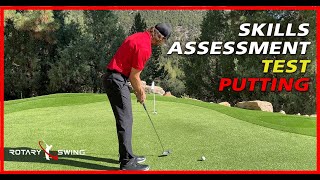


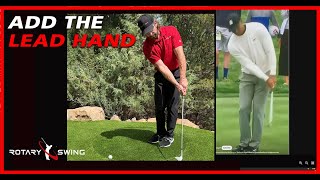


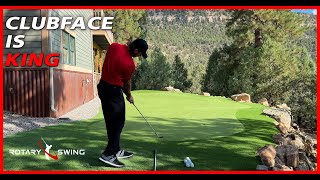








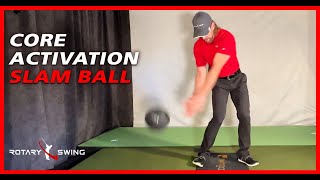





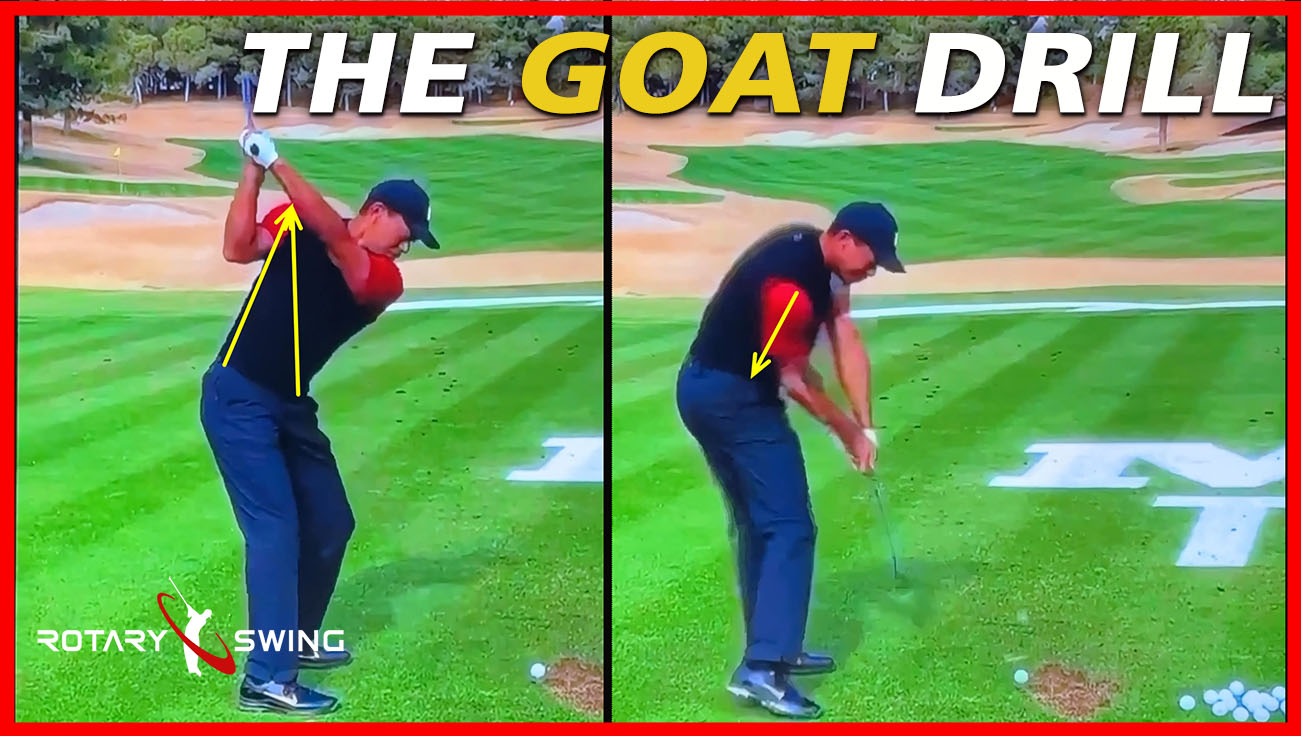


















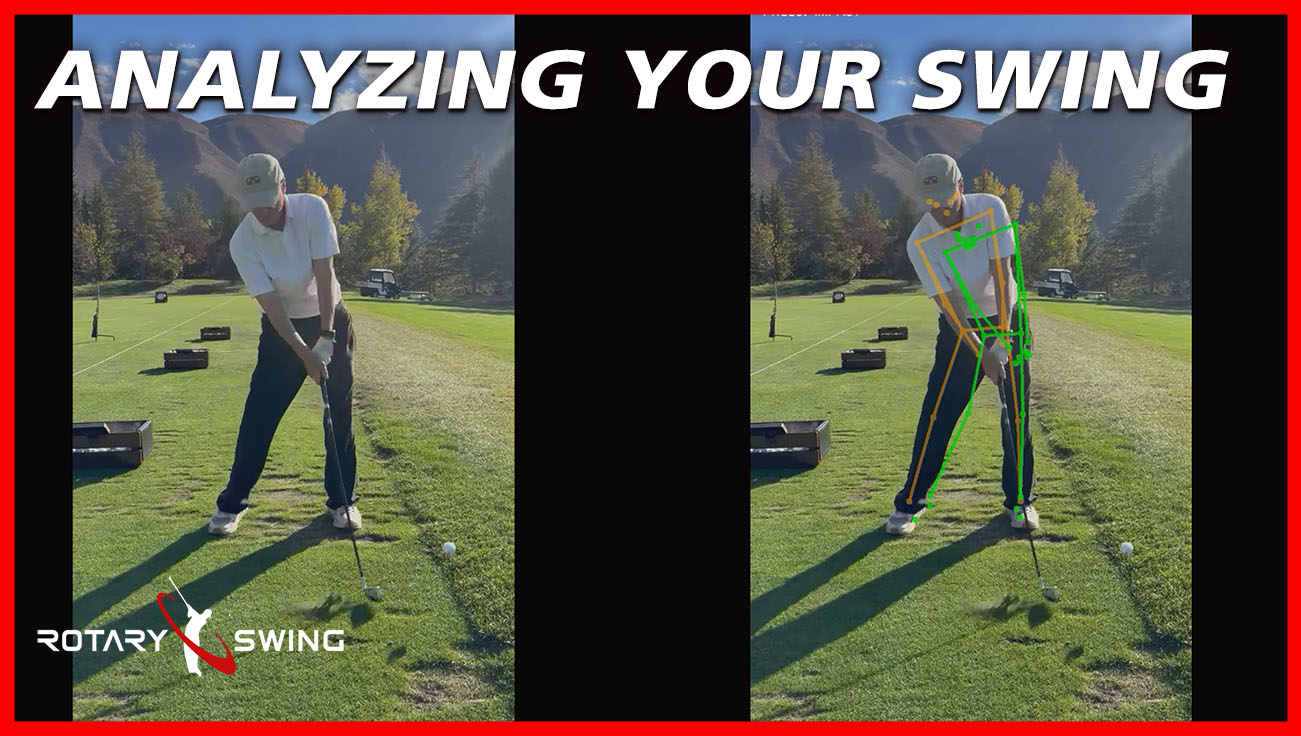






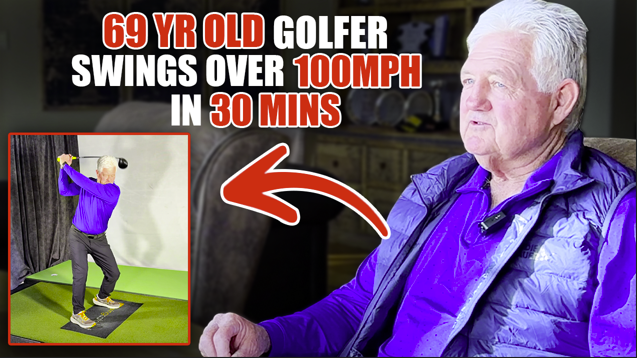
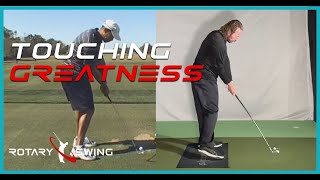

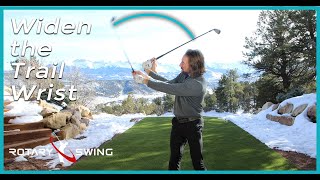



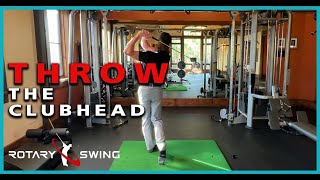







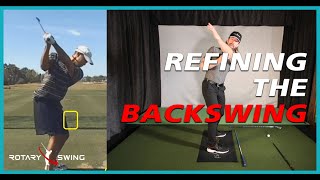







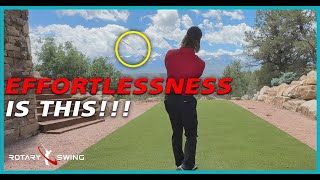
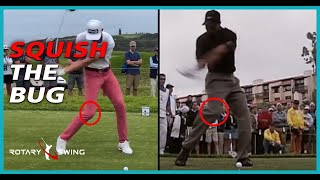
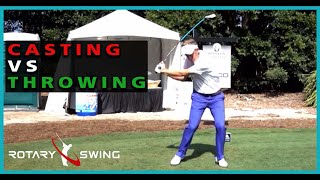



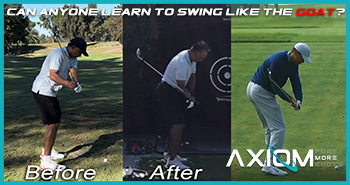






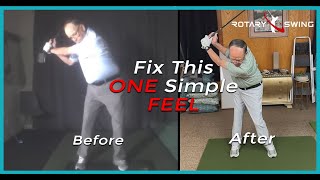











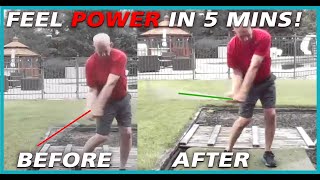


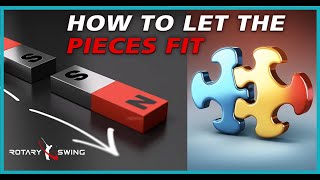

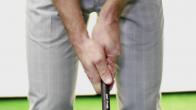




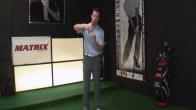













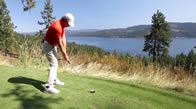



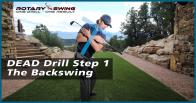

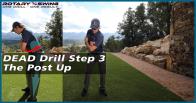










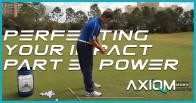











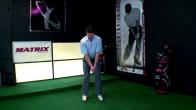



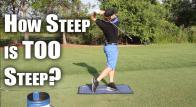


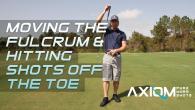



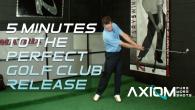

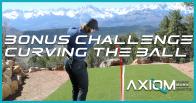






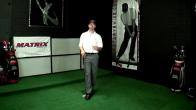









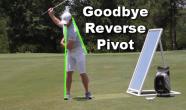





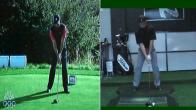



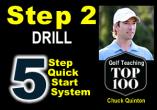






















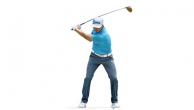

































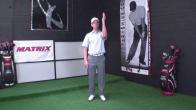




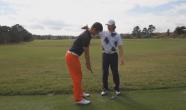















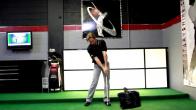



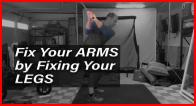


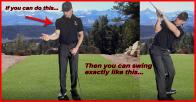




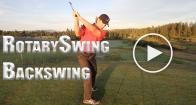

















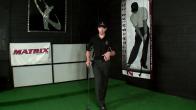







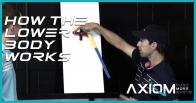












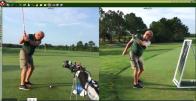






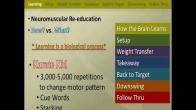
















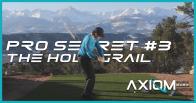

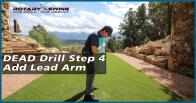


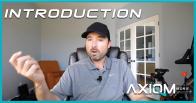

















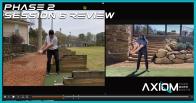







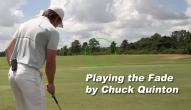











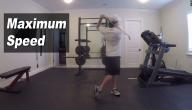

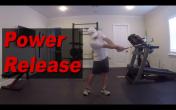
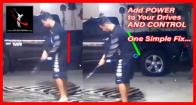


















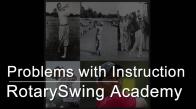







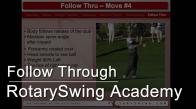






















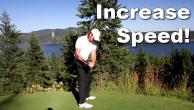



















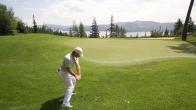





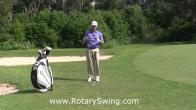











Robert
Chuck
Gary
Gary
Craig (Certified RST Instructor)
Craig (Certified RST Instructor)
Asle
Craig (Certified RST Instructor)